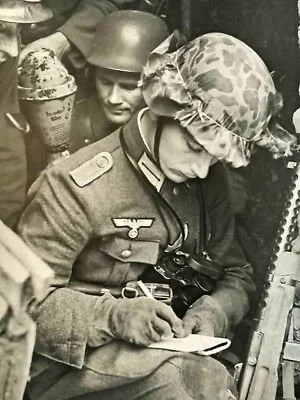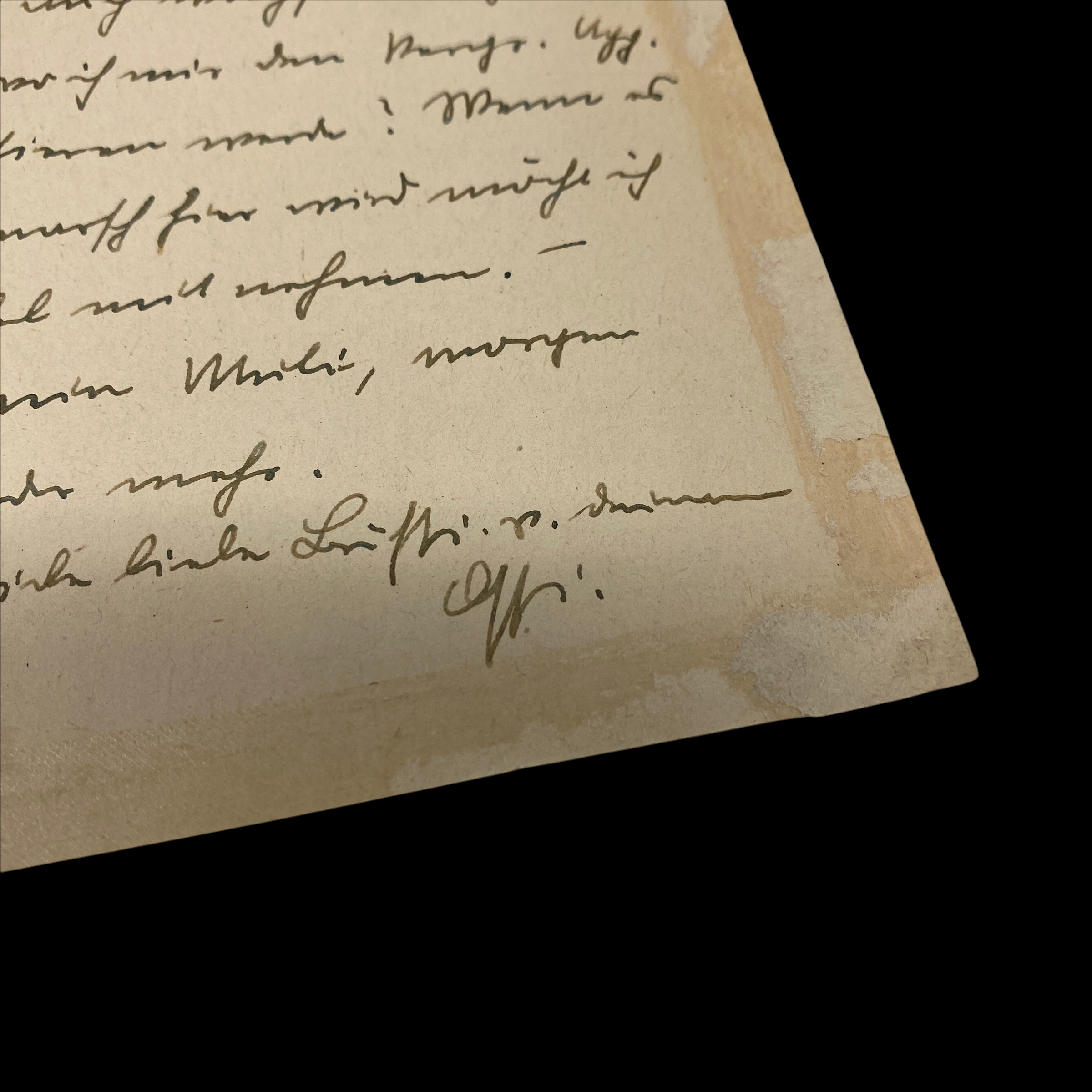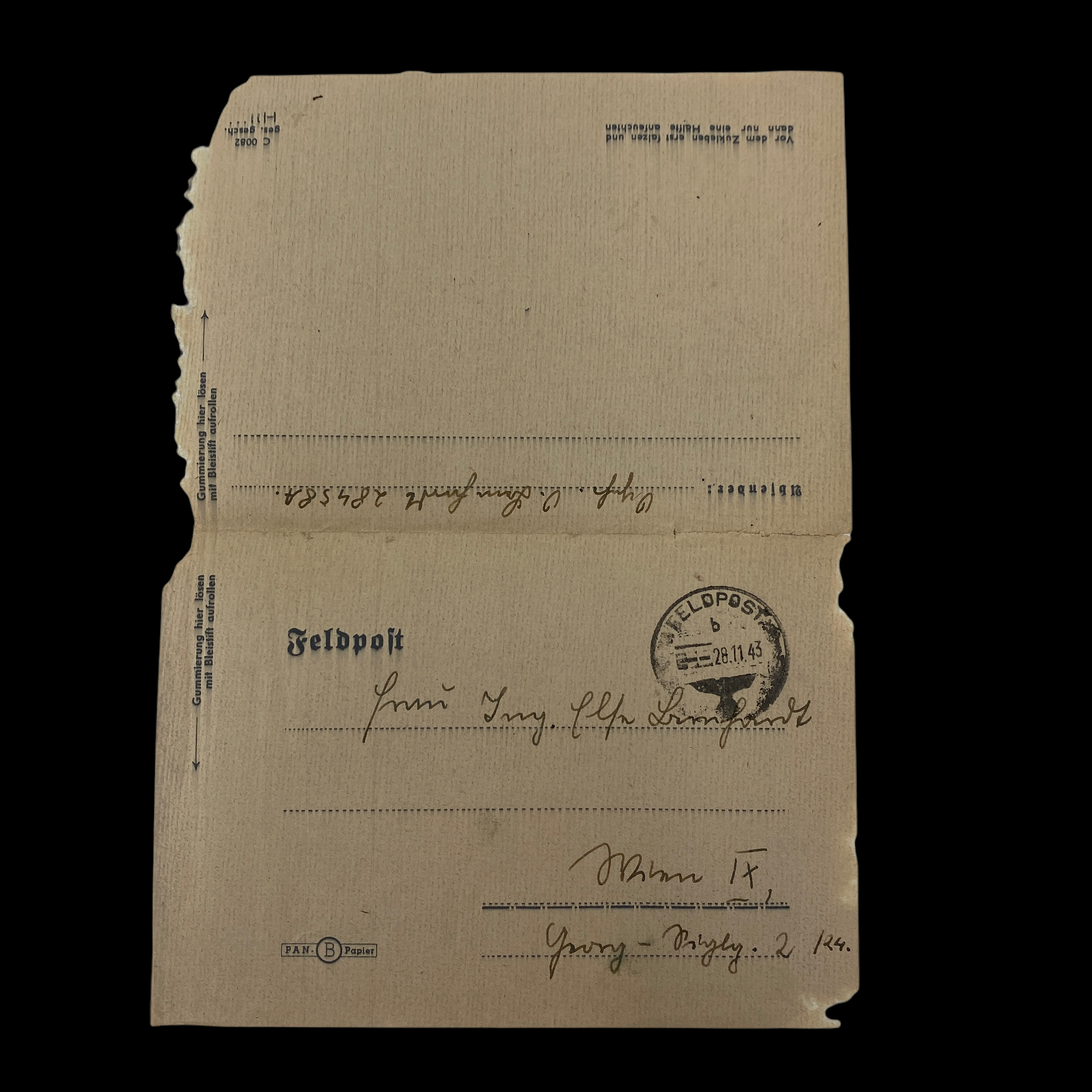WWII 1943 Dated Named K.I.A. German Soldier (Bernhardt) Combat Letter to Wife *







WWII 1943 Dated Named K.I.A. German Soldier (Bernhardt) Combat Letter to Wife *
Comes with C.O.A.
Original combat and operational field letters are one of the most personal and unique artifacts of war. A single letter can give you rare insight into what a soldier was feeling right before a major battle, their worries in combat, hardships they’ve faced, their military successes and even their hopes and aspirations for after the war.
This incredible WWII German combat field letter was written by a German soldier (Bernhardt) who was K.I.A. (Killed In Action) in 1944. From Altlengbach (Austria), Bernhardt served in the German Army as an Austrian soldier for the Nazi war effort. Austrians were overrepresented not only in the system of terror against Jews but also on the battlefields. During the course of the war, hundreds of thousands of Austrians fought as German soldiers; a substantial number of Austrians served in the SS, the elite military corps of the Nazi Party.
In a high German command letter written to the wife of Bernhardt notifying her of his death in combat it translates…
“Dear Mrs. Bernhardt, in this case I can not even say words of consolation to you, because they do not help. We just have to hope that the times won't get even harder for us and that at least your children will have a better future. We all mourn with you and still can't believe that it should be real. How often have we imagined the time when your husband will be among us again and sincerely look forward to it, but fate is cruel.”
In between battles and operations on the front lines, soldiers from all sides (Allied and Axis) would write personal letters back home to their loved ones and families. Dated 1943, this original World War II German soldier's letter to his wife offers an incredible view of what German soldiers went through on the front lines. This letter has an extensive amount of German writing and it's signed by the German soldier (Bernhardt) as well. While the letter is not translated, it truly is a remarkable piece of World War II history and offers an interesting story as to how this letter survived all these years.